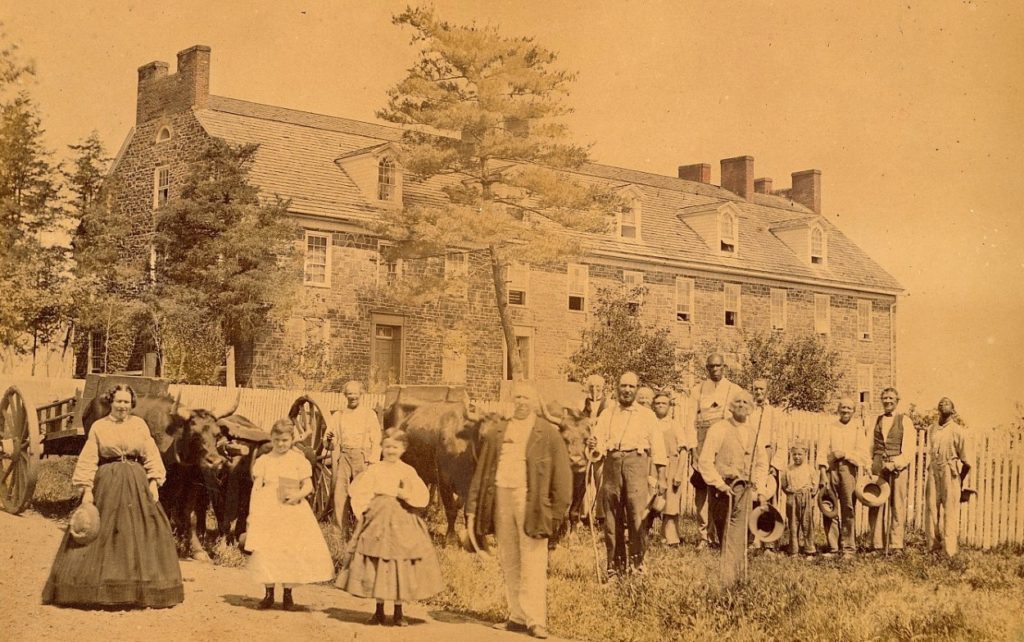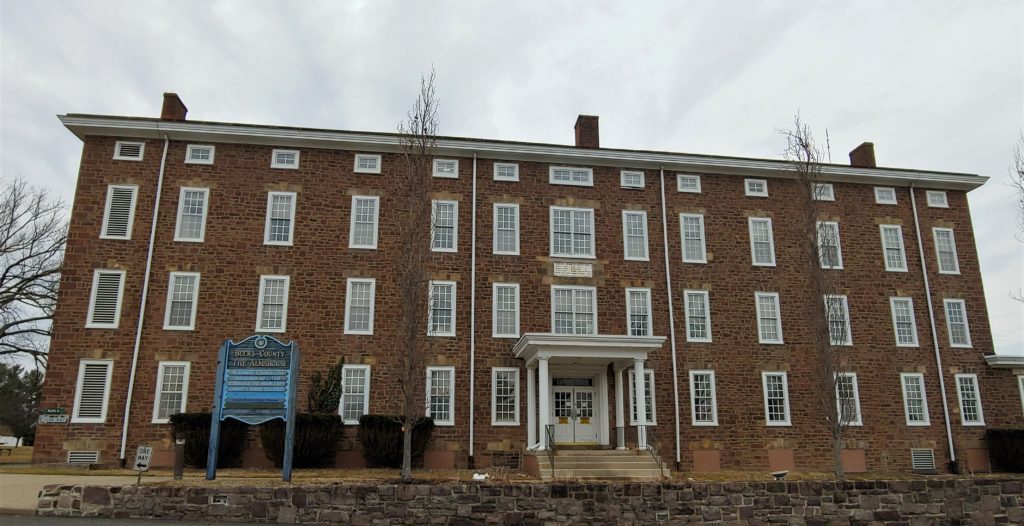The story behind Bucks County’s Almshouse Road.
Behind every place name often lurks a tale that fires the imagination. I once tracked 26-mile-long Swamp Road from Newtown to Quakertown to find out where it led and how it got its name. To travel between the county seat in Newtown and bustling Quakertown in Colonial days, you had to pass through “the Great Swamp” just below Q-town. It was there you could encounter wolves, bears, cougars, snakes and other fearsome creatures. Folks named the road “Swamp Road” – no doubt as a warning.
Another route that intrigued my curiosity was Almshouse Road stretching 15 miles from New Britain to Richboro. Why that name?
Long before it was known as Almshouse Road, the dirt roadway didn’t have a name or it’s been lost in time. A few miles south of Doylestown, the road passed over a scenic plateau known as Spruce Hill rising 100 feet above Neshaminy Creek. Stone outcrops and a forest of hemlock spruce attracted admirers. Small animals and birds such as the ruffled grouse were abundant amid acres of rare plants including the walking fern, purple clematis and Dutchman’s breeches.
County government viewed the plateau as the perfect place to clear and build an “almshouse” in 1808. Almshouses – homes for the poor, elderly, orphans and the indigent who could no longer pay rent – were an English tradition brought to Pennsylvania by founder William Penn. “Alms” came from a Christian principle of charity dating to the 10th century where money or services were donated to care for the poor.

In Bucks, the choice of the plateau came after a search for other sites in Hilltown, New Britain, Plumstead and townships in Lower Bucks. All wanted the poorhouse built in someone else’s backyard. Despite stiff resistance, the county commissioners finalized purchase of 360 acres of the Rodman Farm on Spruce Hill. Construction got underway on May 4, 1809. A two-story fieldstone poorhouse took less than a year to build. That’s surprising given the county supplied 820 gallons of alcohol to be consumed by the workers during construction. The Rodman farmhouse became a hospital and another stone building was outfitted with cells for the worst cases of insanity.
The new almshouse opened on March 20, 1810 with 24 townships sending139 “inmates” to reside in the facility. Its farm acreage worked by county prisoners helped support management costs. The worst crisis occurred in 1849 with an outbreak of deadly cholera. Within a week, 18 residents perished. At the end of the second week, the toll stood at 80 of the 145 occupants. In trying to provide care, almshouse steward William Edwards and his wife both died before the epidemic abated
For a time, the hospital treated soldiers home from the Civil War. After the war in 1868, the county constructed a massive four-story, 60-room hospital on the grounds which still stands today as quarters for the Bucks County Planning Commission and other agencies.
During its 156-year history, the almshouse was home to two of its most famous residents. One was Benjamin “Big Ben” Jones, a runaway slave with a tall, massive stature. In 1833, he escaped to Bucks County from his master, William Anderson of York, Md. In Buckingham, Big Ben obtained shelter from local Quakers in deep woods atop Buckingham Mountain where a camp for fugitive slaves and Mount Gilead A.M.E. Church were established. For 11 years, Jones was employed chopping wood and doing farming chores in the surrounding Quaker community. In the spring of 1844, he was at work in a field when Anderson and four slave catchers spotted him. Using an axe, he defended himself against the others wielding clubs. After a ferocious struggle, the assailants finally subdued Jones. Seriously injured, he ended up in Baltimore where he was listed for auction to a Deep South plantation from which he could never escape. His injuries, however, made him unmarketable. That gave local Quakers time to meet and raise funds to buy back his freedom and return him to Buckingham to live out the rest of his life. He never fully recovered from his injuries. Unable to work, he and wife Sarah retired to the almshouse where he passed away sometime after 1880.

The other famous person to live at the almshouse was author James Michener. He was an orphan in the early 1900s before being adopted in infancy by Doylestown’s Mabel Michener. After young Michener graduated from Doylestown High School in 1925, he became the Pulitzer Prize-winning author of “Tales of the South Pacific” and many other best-selling novels.

The Bucks County Almshouse closed in 1966 and reopened the following year as Neshaminy Manor nursing home. New facilities were built in 1999 to house those in need of long term care. Meanwhile, Almshouse Road reminds us of what used to be.
Sources include a history of almshouses at www.almshouses.org on the Net; “Bucks County Almshouse” on the web at www.asylumprojects.org; and the story of Big Ben in “The History of Mount Gilead” on the web at http://mountgilead.org/the-history-of-mount-gilead/

